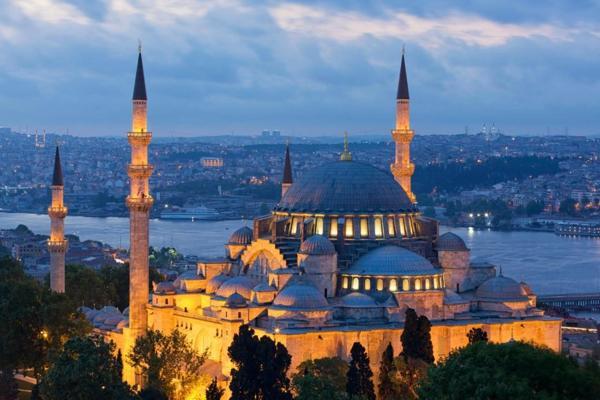Historical buildings strengthened with ancient method
Umut Erdem - ISTANBUL


Preparing a disaster plan against a possible major earthquake in Istanbul, the Culture and Tourism Ministry has started to strengthen the historical monuments benefiting from an ancient method known as “Khorasan mortar,” which was also used by the chief Ottoman architect Mimar Sinan.
After the Feb. 6 earthquakes that caused massive destruction in the 11 southern provinces, historical sites, especially in Hatay’s İskenderun and Antakya districts, experienced severe damage.
With the increasing anxiety derived from experts’ warnings against a possible large-scale quake in Istanbul, people in the city have started to take measures by moving to the safer places or strengthening their houses and workplaces.
The city, which has borne witness to several civilizations, cultures and states for centuries, hosts numerous historical structures.
Accordingly, the Culture and Tourism Ministry has prepared an emergency disaster plan for museums and cultural assets.
In the strengthening efforts of the historical structures, the ministry started to benefit from the “Khorasan mortar,” method, which was frequently used in mosques and bridges in the Ottoman period.
Widely known as the method of Mimar Sinan (Sinan the Architect), Hagia Sophia (Ayasofya) Mosque, Rumeli Hisarı (Rumelian Castle) and Süleymaniye Mosque were built with this mortar.
Historical Khorasan mortar is obtained by mixing crushed forms of bricks and tiles with lime.
This mixture enables buildings to have elasticity during an earthquake, while it is also highly resistant to water due to the characteristic of brick shards.
The ministry used this ancient method in the renovation efforts of Galata Tower.
In addition to Sinan, it is known that the Khorasan mortar is also utilized by Ancient Greek, Roman and Byzantine empires.
Some 29 historical structures including mosques and churches have been strengthened so far.
The ministry also initiated a large-scale study for historical artifacts in the museums.
Yahya Coşkun, Deputy General Manager of Cultural and Heritage Museums, stated that they plan to build “Warehouse Museums” on both sides of Istanbul, where historical artifacts that are in the museums’ collections, but not currently on display will be preserved.
The Warehouse Museum that we will build at Istanbul Ataturk Airport will be completed in a few months, Coşkun noted.
“Artifacts are systematically stored in special steel cabinets that are resistant to fire and tremors. The cabinets are fixed to the floor and to the walls. The covers and shelves are designed to prevent the works from falling and breaking.”
Stating that show-cases designed for earthquakes were fixed to the floor and walls, Coşkun noted that the works exhibited in the show-cases were placed on metal and plexin pedestals.
